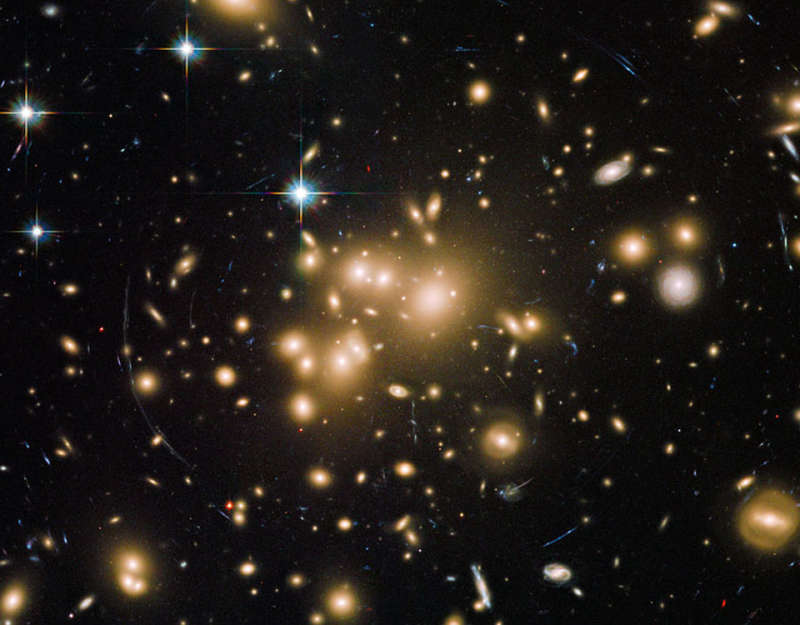
|
Credit & Copyright: NASA,
ESA,
Hubble Heritage Team
(STScI/AURA), and
J. Blakeslee
(NRC
Herzberg,
DAO) &
H. Ford
(JHU)
Explanation:
It is one of the most massive objects in the visible universe.
In this view from the Hubble Space Telescope's
Advanced Camera for Surveys,
Abell 1689 is seen to
warp space as predicted by Einstein's
theory of gravity -- deflecting light from individual galaxies which lie
behind the cluster to produce
multiple, curved images.
The power of this enormous gravitational lens depends on its mass, but
the visible matter,
in the form of the cluster's yellowish galaxies, only accounts
for about one percent of the mass needed to make the observed
bluish arcing images of background galaxies.
In fact, most of the gravitational mass required
to warp space
enough to explain this cosmic scale lensing is in the form of still mysterious
dark matter.
As the dominant source of
Abell 1689's
gravity, the dark matter's
unseen presence is mapped out
by the lensed arcs and
distorted
background galaxy images.
Surprisingly, close inspection of the
above image
has revealed the presence of over 100,000
globular star clusters
in the galaxy cluster.
|
January February March April May June July August September October November December |
| |||||||||||||||||||||||||||||||||||||||||||||||||||||||
NASA Web Site Statements, Warnings, and Disclaimers
NASA Official: Jay Norris. Specific rights apply.
A service of: LHEA at NASA / GSFC
& Michigan Tech. U.
Based on Astronomy Picture
Of the Day
Publications with keywords: abell 1689 - gravitational lens
Publications with words: abell 1689 - gravitational lens
See also:
